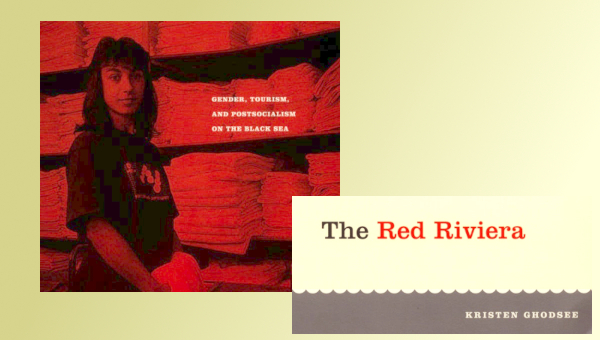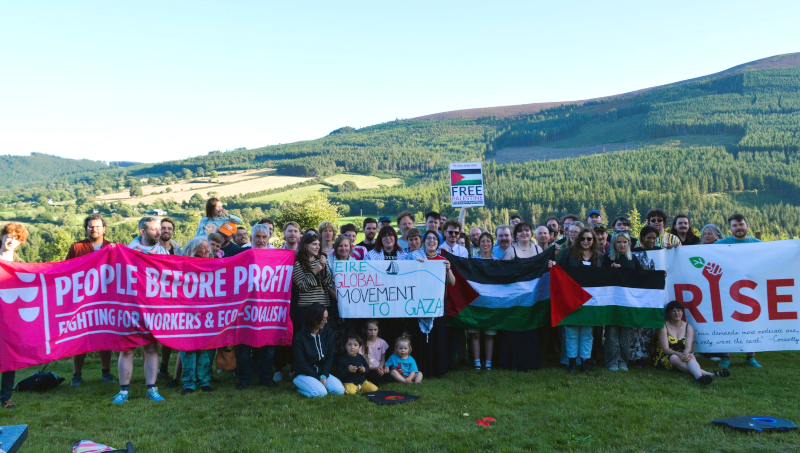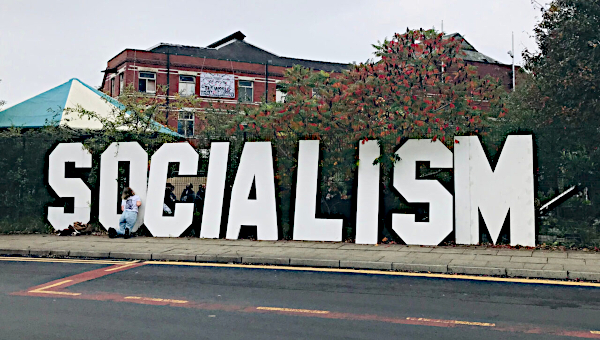On ‘Rioting’ and State Violence
The uprising that emerged following the murder of George Floyd reignited debates about violence both in the media and among activists and scholars of social movements. Under pressure to distinguish the violence sometimes used by protestors from the state violence they oppose, activists have alternated between emphasizing the strategic or moral value of nonviolence and analyzing the causes and effects of violent action. As in the past, the former, “normative” approach has enjoyed broad social traction; however, as critical theorist AK Thompson has pointed out, movement participants who advance such conceptions have often ended up implicitly defending the state’s monopoly on the legitimate use of force. In contrast, Thompson has argued that developing an analytic approach to the question of violence has allowed activists to perceive the limits of political representation and thus to begin coming to terms with the demands of politics as such.
Thompson first advanced these arguments in his 2010 book Black Bloc, White Riot: Anti-Globalization and the Genealogy of Dissent, an underground classic that turned 10 this year. Focused on the struggles against corporate globalization that heralded the new millennium, the book anticipated many of the themes that continue to shape debates about protest violence today. Black Bloc, White Riot is now the subject of a forthcoming special issue of the journal Theory in Action committed to documenting the volume’s enduring relevance. In this interview, I push Thompson to clarify the political and strategic implications of the distinction he advances between normative and analytic conceptions of violence.
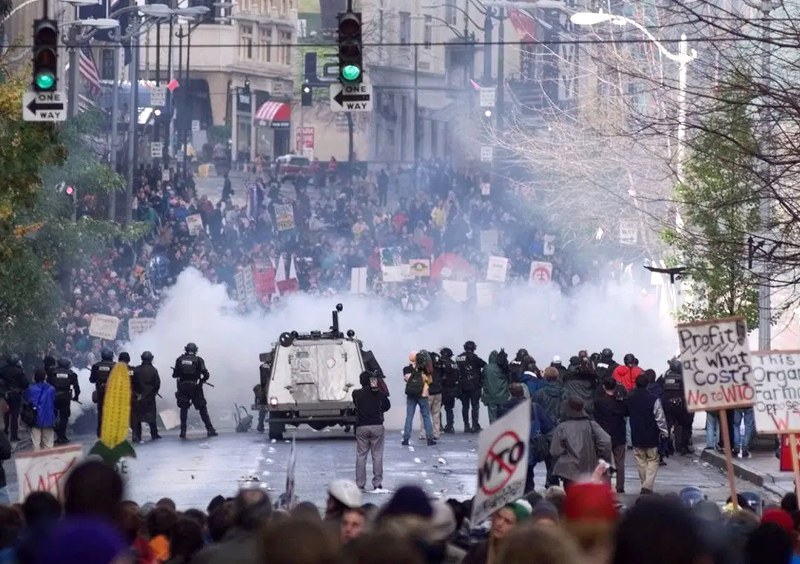
Clare O’Connor (CO): In Black Bloc, White Riot, you argued that the emergence of black bloc tactics, which use sartorial uniformity to facilitate confrontation, helped reveal the limits of the representational sphere within which most movements operate. Since then, political violence by non-state actors has become more common and state violence has become more brazen. Nevertheless, the polarized debates this violence has yielded have been very similar to the ones you described 10 years ago. How do you account for this?
AK Thompson (AKT): The emergence of the black bloc during the Battle of Seattle in 1999 presented movement participants and commentators with a form of political violence thought to have arisen from the white middle-class. This resulted in a tremendous conceptual confusion since, historically speaking, the white middle-class has served as representation’s ideal subject. Since representation is commonly understood to be violence’s antithesis, black bloc actions disrupted not only norms but also presuppositions regarding the meaning of politics as such. This confusion has not really abated.
It arose again during the Occupy movement in 2011–’12, when journalist Chris Hedges characterized the black bloc as the movement’s “cancer.” Although he did not intend it, this characterization helped to reveal the violence upon which the system of representation itself depends. Hedges was opposed to black bloc violence, but his argument reveals how even appeals to nonviolence disclose an indebtedness to violence as such. Recall that, for Susan Sontag, “to describe a phenomenon as a cancer” is itself “an incitement to violence.”
Since the decline of the Occupy movement, we’ve seen a tremendous increase in the number of violent non-state actors on the political field. The Ferguson and Baltimore riots of 2014 and 2015 featured centrally in the rise of Black Lives Matter, and this pattern was repeated following the murder of George Floyd in May 2020. Since Trump’s election in 2016, antifascists have been forced to confront far-right forces in street fights across the land. During the spring and summer of 2020, pro-Trump militants staged armed rallies to intimidate politicians, shot activists at protests, and crashed their cars into crowds of political opponents. Misogynists aligned with the incel movement have also used the latter tactic while committing mass murder, as they did in Toronto in 2018.
These developments are frightening, since they suggest that the representational paradigm forged by the bourgeoisie at the end of the 18th century is unraveling. It’s important to recall, however, that representation was never all that it was cracked up to be. Even for its advocates, the limits of representation had become impossible to ignore by the end of the 20th century. Voter suppression, the collapse of meaningful distinctions between electoral contenders in the two-party system, and the wholesale disenfranchisement of criminalized populations all served to telegraph representation’s limit as official politics.
Meanwhile, on the streets, protestors were being met with intensified criminalization, on the one hand, and the institutionalization of conventional protest, on the other. This institutionalization (which led some scholars to advance the “movement society” thesis) made participation more accessible; however, it also smothered protest’s contentious dimension. We’re thus left with a widening array of criminal acts that are not recognized as legitimate protest and an increase in the number of people participating in actions that have been robbed of their force.
The street-level political violence of our time is both a symptom and a response to the degeneration of representation as a political paradigm. It’s not surprising that it has prompted impassioned responses, especially among those who once considered representation to be a viable political mode.
What’s striking is how similar these responses have been to the ones that arose during the previous cycle of struggle. In particular, we see the reiteration of negative-normative conceptions, which characterize violence as being both exceptional and inadmissible within the political field. The logic is clear: violence means harm and, because harm is bad, we should avoid inflicting it at all costs. Little effort is made, however, to come to terms with the tremendous and largely unrecognized daily violence in which we participate as a matter of course. Since the analytic assessment of violence forces us to come to terms with the fact that our nonviolence is itself founded on violence, it’s not surprising that most of us choose to remain within the bounds of our normative conceptions.
From this perspective, we can imagine that the antithesis to the negative-normative conception is not analytic but rather positive-normative. Instinctively, we recoil from positive-normative conceptions like the one elaborated by the Nazis, who instituted a cult of death. As Walter Benjamin once noted, this positive-normative conception had the power to make people “experience [their] own destruction as an aesthetic pleasure of the first order.” In the face of such misery, doubling down on a negative-normative conception seems obvious. Problems arise, however, when we discover that our normative conceptions conceal as much as they reveal, and that they pertain to effects and not to the character of violence as such.
CO: In your view, coming to terms with the character of violence as such forces us to reevaluate our conception of politics. How do you understand this connection?
AKT: Normative conceptions fail to recognize that negative effects only tend to register when they are negative for us (whoever that “us” may be). For this reason, the negative-normative conception can become an impediment to analysis, since it conceals the tremendous social violence in which we are all already complicit. In addition to this analytic problem, normative orientations are also beset by practical difficulties. Political actors who have tried to remain nonviolent, for instance, often discover that the terrain is rarely as stable as it might have seemed.
Finding themselves all of a sudden on the wrong side of the state’s elastic definition, activists have often claimed that their actions were not in fact violent (since property is not sentient, for example), and that whatever disruption they caused amounted to nothing when compared to the real violence of the state. This is a powerful argument, and it has some strategic merit. Nevertheless, it leaves the state’s monopoly on the legitimate use of force unchallenged. Analytically, I think we’re better off by provisionally accepting the state’s characterization so that we can ask: What made the state decide that a previously sanctioned act should now be considered violent? And what does this decision say about the relationship between violence, production, and politics as such?
If we take the state at its word, we begin to see that the problem of violence is inextricable not from harm (which is epiphenomenal) but from social organization. The liberated zone that arose in Seattle following the evacuation of police from Capitol Hill in June 2020 was characterized as violent by state officials and media commentators. This was because the movement had seized territory and removed it from the law. At the level of social relations, however, the liberated zone was street art, community gardens, and mutual aid all the way down. There may be some strategic value in emphasizing the ostensible nonviolence of these relations; however, doing so can undermine our capacity to see (and thus to partake in) the logic of sovereign contestation.
CO: Activists sometimes distinguish between “protestors” and “rioters” when responding to critics of movement actions. What are the implications of this categorical parsing?
AKT: On one level, the distinction between protestors and rioters is self-evident. The repertoire of action associated with popular contention since the beginning of the 19th century featured demonstrations, petitions, and public displays of unity. These tactics make sense if we presuppose that movements will be recognized as legitimate claimants and that the state will respond to their demands because its legitimacy is founded (so the story goes) on the consent of the governed. In contrast, the riot belongs to an earlier political paradigm founded not on recognition but on the imposition of negative sanctions. Its question is not: How can we be heard? Instead, it asks: How might we increase the costs incurred by those trying to maintain the status quo while simultaneously helping ourselves?
Historically, the riot had been an effective option for those with little access to the formal levers of power. Since the advent of representational politics, however, riots have been sidelined by demand-based movements, which offer a legitimated channel through which non-state actors can engage in political contention. As social movement scholar Sidney Tarrow once noted, the advent of the modern protest repertoire meant that many “ordinary people […] lost some of their cherished, proven means of retaliation” and, with them, “some of their political leverage” too.
The result is that, rather than being perceived as a discrete mode of political contention with its own logic and aims, rioting now tends to get characterized as failed protest. It’s on this basis that we see efforts – both by state actors and within movements themselves – to draw sharp distinctions between good protestors and bad rioters. By expelling the radical flank, movements may provisionally shore up their legitimacy; however, the cost of this maneuver is often that the political terrain within which they must operate becomes narrower. Meanwhile, the problems arising from the representational paradigm’s historical inadequacy and current instability go unresolved.
Social movements have always been contradictory phenomena, where claims to popular sovereignty coexist with a demand-based repertoire that presumes rights and recognition. For this reason, movements have an indeterminate relationship to violence. As social movement scholar Charles Tilly recounts, the historical model for the modern demonstration is the military parade. Nevertheless, the representational paradigm, the seductions of legitimacy, and the demand-based repertoire to which these gave rise have undermined movements by disconnecting us from our origins and restricting our conception of the political.
CO: Even among critical scholars of violence, many have gravitated toward the negative-normative conceptions you critique. How do you make sense of this pattern?
AKT: Many critical scholars have aimed to increase the range of actions and events that fall under the purview of violence with the aim of rooting it out. The first impulse, to broaden our awareness of violence’s omnipresent character, is analytically correct; however, the subsequent normative resolution becomes an impediment to thought and action. If we begin, correctly, to see violence everywhere, then the solution cannot be to somehow exempt ourselves from it. Instead, we must determine how to assume responsibility for it, and at its logical conclusion this demands both sovereign usurpation and a democratization of violence itself.
As a result of my intellectual commitments to Walter Benjamin, I find the problem of the negative-normative conception to be especially evident in the secondary literature on his work. Judith Butler and Susan Buck-Morss both recently released books in which they enlist Benjamin to make the case for nonviolence. In The Force of Nonviolence (2020), Butler sidesteps Benjamin’s forthright claims regarding divine violence and disparages those who gravitate toward them for having “largely misread” the author’s intention. But rather than correcting these unspecified misreadings, Butler works instead to reframe Benjamin’s argument by pointing to the section of his “Critique of Violence” in which he recounts techniques of conflict resolution that can never be encoded in law. For Butler, these techniques coincide with Benjamin’s conception of translation, in which both copy and original are transformed through a reflective process that presages the absolute.
Given Butler’s ongoing engagement with questions of relational subjectivity (much in The Force of Nonviolence rehearses ideas she first put forth in Precarious Life more than a decade ago), it’s not surprising that she was drawn to this passage in Benjamin’s work. Nevertheless, the forms of conflict resolution Benjamin identifies only exist beneath or beyond the law; they are not the means by which the law itself is usurped. Rather than being an exegetical correction, then, what Butler offers is a belabored admission of her own reluctance to follow Benjamin through to his “anarchist conclusion.”
As the author of The Dialectics of Seeing (1989), Susan Buck-Morss remains one of the most important secondary sources on Benjamin. In her recent book Revolution Today (2019), she draws on the Benjaminian strategy of montage to advance a set of theses regarding how struggle might best unfold in the present. Among these theses, she includes “no fetishization of revolutionary violence.” In itself, this may not seem contentious. Nevertheless, we must recall how frequently the charge of fetishism is leveled whenever radicals initiate candid discussions on the topic. And here I’m reminded of Merleau-Ponty’s observation that, despite being charged with placing violence at the center of the political field, “communism does not invent violence but finds it already institutionalized.” Starting on the basis of what is rather than what ought to be, communism strives to come to terms with the reality it inherits.
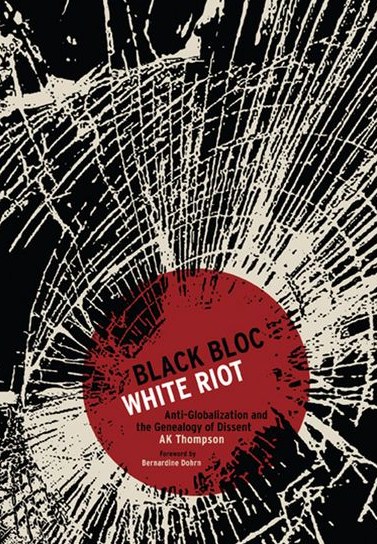
The bad faith of Buck-Morss’s thesis becomes overt when, in an effort to bolster her cautionary tale, she presents a montage in which a revolutionary-era photo of armed women in Cuba’s Plaza de la Revolución is forced into correspondence with a recent snapshot of women being inducted into the Israel Defense Forces. It may well be the case that the latter soldiers believe that Israel is a revolutionary republic, or that the IDF might somehow be vindicated by superficially similar historical data points; however, thoughtful readers are unlikely to confuse occupying armies with the subjects who will carry out “revolution today.” Moreover, mythic associations of this kind (and Buck-Morss must know this) are antithetical to the illuminating constellations that Benjamin endorsed.
These texts are but two examples of a more general pattern in which academics run up against the limits of their own comfort before shying away from the implications of the material that seduced them. In contrast to this tendency, I’m inclined to follow Marx’s injunction to practice “a ruthless criticism of everything existing.” He specified that this criticism needed to be ruthless in two senses: “The criticism must not be afraid of its own conclusions, nor of conflict with the powers that be.”
CO: How do you account for the discrepancy between your reading of Benjamin and the ones that predominate in the secondary literature?
AKT: As Butler’s and Buck-Morss’s comments make plain, many contributors to the secondary literature fail to do justice to Benjamin’s political commitments. Others operate as if Benjamin’s supposed eclecticism was proof that there was no overarching coherence to his work. Consequently, they cite him in an ornamental way. Finally, several competing schools of thought claim Benjamin as their own by emphasizing aspects of his oeuvre while ignoring its synthetic character. This last problem was one that Benjamin encountered during his own lifetime. Ostensibly his friends, both Adorno-the-Marxist and Scholem-the-theologian tried to score points by inducting Benjamin into their respective camps before chastising him when he failed to comply.
In contrast to these perspectives, I maintain that there is an overarching methodological coherence to Benjamin’s project. Moreover, I argue that building on his insights means trying to operationalize them. According to Benjamin, fragments derived from material culture could be forced to disclose the historical tensions that gave rise to them. These tensions arise from the fact that our collective desire for liberation has remained unresolved. Accumulated over time, these desires impress themselves on material culture, shaping it in distinctive ways. Becoming aware of this state of non-resolution, Benjamin thought, could alert people to the tasks that befell them and open up what he called “a revolutionary chance in the fight for the oppressed past.” On this basis, he struggled to make the fragments of culture come into their own “by making use of them.”
I argue that this logic must be applied to Benjamin’s work as well. Only when operationalized do the fragments of his intellectual output become comprehensible in their totality. This has been a guiding theme in my work since the publication of Black Bloc, White Riot 10 years ago.
Operationalization is not generally favored in academia. And since operationalization demands prescription, it redoubles its estrangement from academic norms. Finally, and as mentioned previously, many Benjamin scholars seem frightened by the implications of his analysis. This discomfort becomes acute whenever his thought turns to violence. Nevertheless, violence remains a central concept in his work – and there’s no way, short of intellectual dishonesty, to avoid it. Benjamin’s invocations of the insurrectionist Auguste Blanqui and the syndicalist Georges Sorel were neither random nor accidental, but their role in his thought can be overlooked if the overarching coherence of his project is denied. It is against this tendency that I now write. •
This article first published on the LA Review of Books website.



